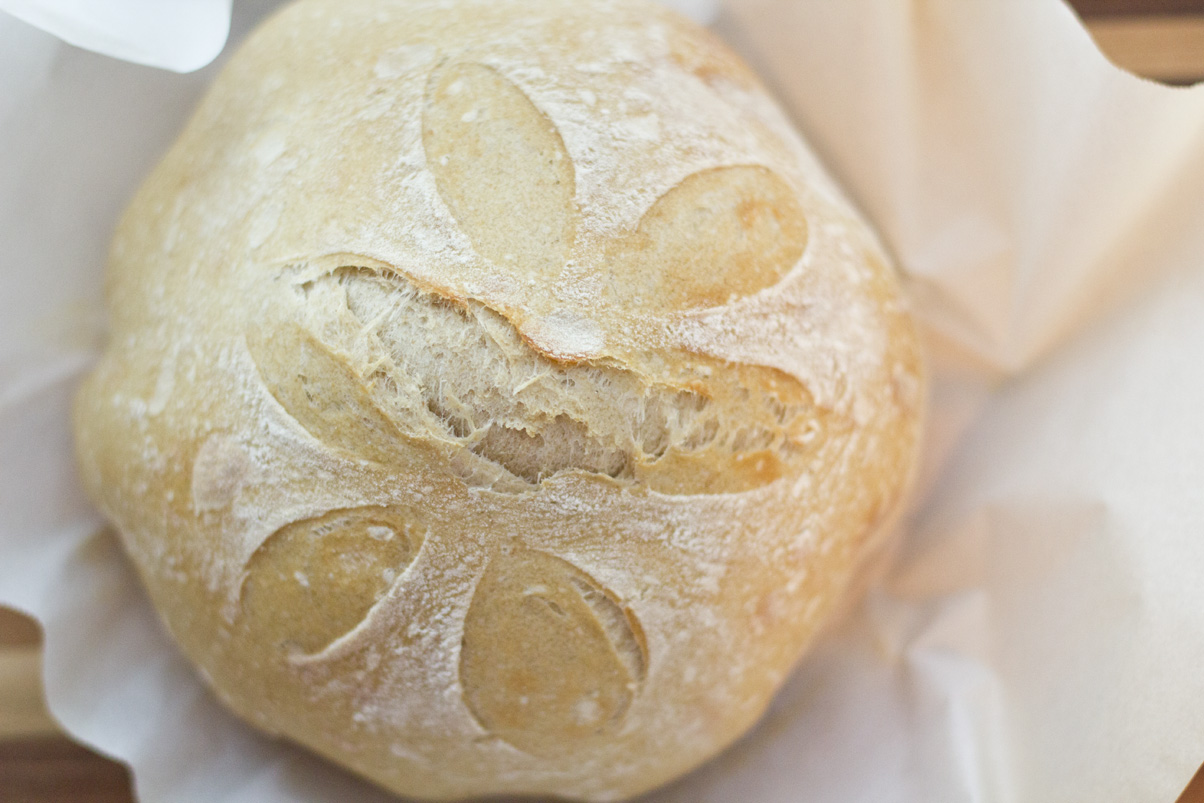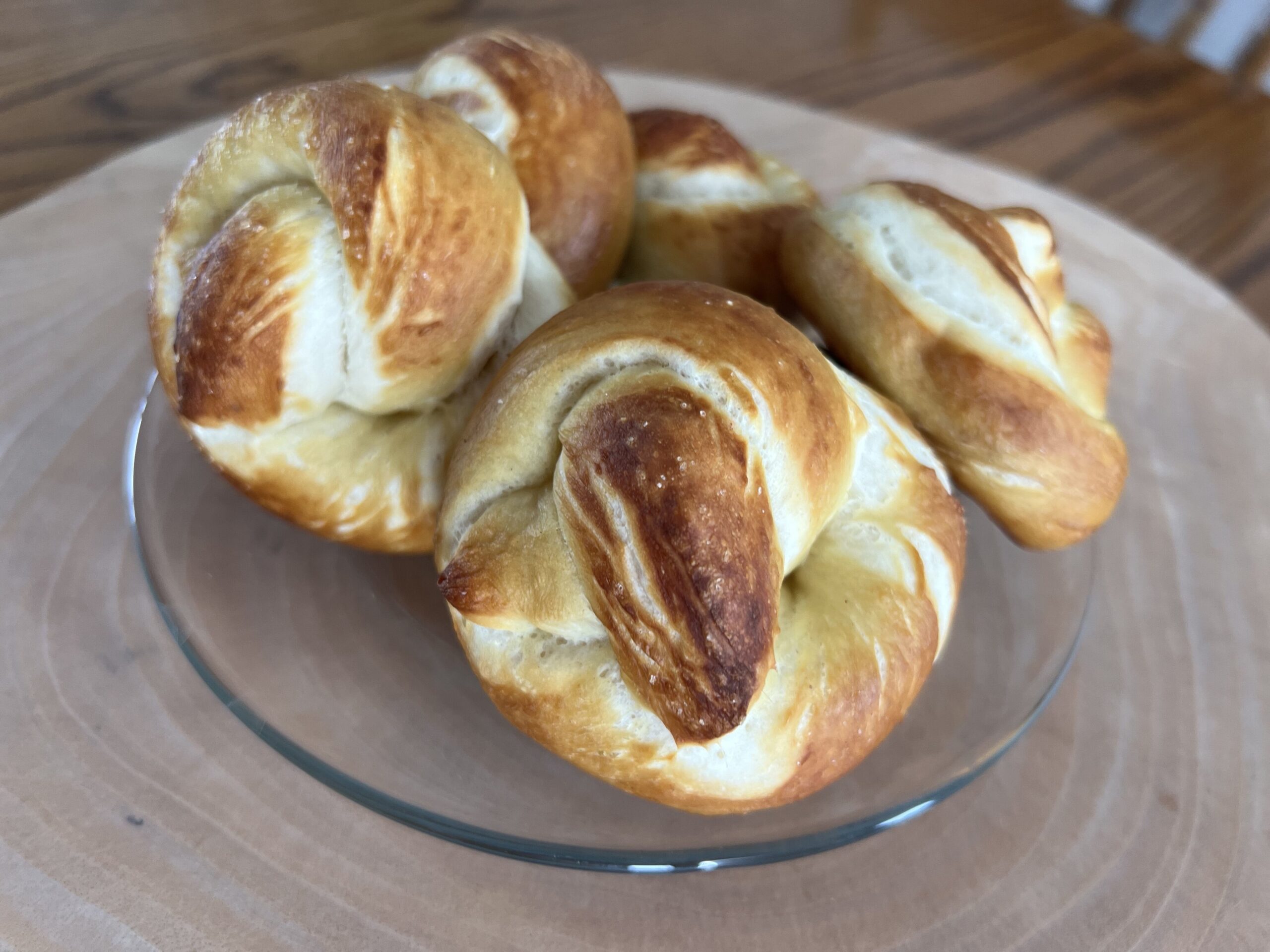Basic Sourdough Bread FAQs
Now that you’ve got your starter up and going, it’s time to tackle those first recipes! Don’t rush into bread making with your starter, it will get better with time, but here are the questions I get the most about making baking basic sourdough bread with your starter!
When can I use it?
After the first week of daily feeds, if your starter is bubbling up and also smelling good – this can be a fruity, yeasty, bread, or sourish smell – then you can use it in the recipes mentioned above. To start making bread, wait until your starter is bubbling really well and also EXPANDING – rising up in the jar after its fed. If the starter isn’t rising, it won’t rise bread and you’ll end up frustrated, so be patient and wait until it shows you it’s ready for sourdough bread baking.
How can I gain confidence working with sourdough? Which recipes to try first?
I HIGHLY recommend NOT starting by making bread for your first go with your starter. Some great first recipes to try that will always turn out and give you confidence baking with sourdough are: whole wheat waffles, crepes, banana bread, pumpkin chocolate chip muffins, and pancakes. Use these recipes after the first week or so when your starter smells good and is bubbling.
Why do some recipes just add the starter and bake? Am I still getting benefits?
I have a few recipes that are “instant” – where you add the starter and other ingredients and then bake it without letting the batter sit. If you have a gluten intolerance I would proceed with caution for these (the two cake recipes), but my reasoning was that I came to a point where I just wanted that starter in EVERYTHING, no matter what. When it’s in your body, it’s doing amazing things for you. So while the cake recipes are a treat and don’t break down the gluten or starches as much in the flour they’re added to – they are still beneficial for MOST people, sensitivities aside.
Why is my bread gooey in the middle?
It’s underbaked. One of the best little gadgets I bought for my bread making was an instant read thermometer (linked in my favorites list). The temperature of bread should be 180-190 degrees when done. I like to tilt my bread and stick the thermometer up into the bottom middle of the loaf to test it.
Why did my bread split on the side while baking?
This can be due to under kneading the dough which means the gluten strands haven’t sufficiently developed to create structure in the dough. Another common reason is the shaping – if there is a weak spot in the dough then in the oven the steam will bust out of that weak spot to escape. Work on your kneading technique and your shaping and it should help!
Is it safe to leave batters on the counter with eggs or milk in them?
Short answer – YES. Longer answer – adding starter to your recipe makes it super human. That good bacteria in there is TRAINED for this moment – it fends off bad bacteria for a living! Rest assured, your batter is safe with that starter in there. If you’re really nervous just throw it in the fridge, but it’s safe.
How do I rise my dough in the fridge?
Place the dough in a well oiled bowl with a lid, or cover it with greased plastic wrap and a heavy towel. You can rise the bread in the fridge for up to 72 hours if you want (I have not personally ever done this long of a rise – my gluten sensitive body does just great with 6-12 hours of fermenting on a long proof). Take the dough out of the fridge and allow it to come to room temp. Shape and rise a second time, then bake!
How do I convert my favorite recipe into sourdough?
Don’t stress about an exact formula for making your favorite bread recipe into sourdough bread – you can add about a cup of starter to most bread recipes instead of the dry yeast. If it’s a smaller recipe (one loaf) then take that down to 1/2-3/4 c depending on the tang you desire. Baked goods are more difficult, because they don’t call for yeast in the first place. It takes a lot of playing around with liquid/dry ratios after adding in the starter. There is no formula for this, it took me a lot of trial and error.
How do I get my bread more/less sour?
First of all, you know it’s “sour” dough – right? ???? Now that is out of the way, you can develop a more mild flavor over time. I have an entire video on IG linked here about this topic. The short version is that getting your starter to be more mild in flavor takes TIME and consistency. The better you take care of it, over time, it will become more mild if you: always pour off the hooch (liquid that accumulates), use and feed it often, and keep it in the fridge. Starters will start off more tangy, so be patient. You can also try folding in 1 tsp of baking soda while shaping your dough before the second rise to try and cut through some of the tang. On the other hand, if you love the tang: stir in the hooch, keep your starter on the counter and feed it every day, but before you want to use it you can “starve the starter” – let it go without being fed for a few days in the fridge then stir in the hooch, give it a feed to get it happy, and use it. Also the longer your dough ferments the more tangy it will get, but to avoid over proofing your dough, do a longer rise in the fridge.
How do I store my bread when it’s baked?
I use plastic bread bags purchased from amazon, or ziploc bags to store my sourdough bread. I also have a linen bread bag I have been playing around with. For artisan loaves with the crisp crust, if you place them in plastic the crust will soften. They can be stored just at room temp until they’re cut into, then they are best eaten within the first day or two.






Comments +